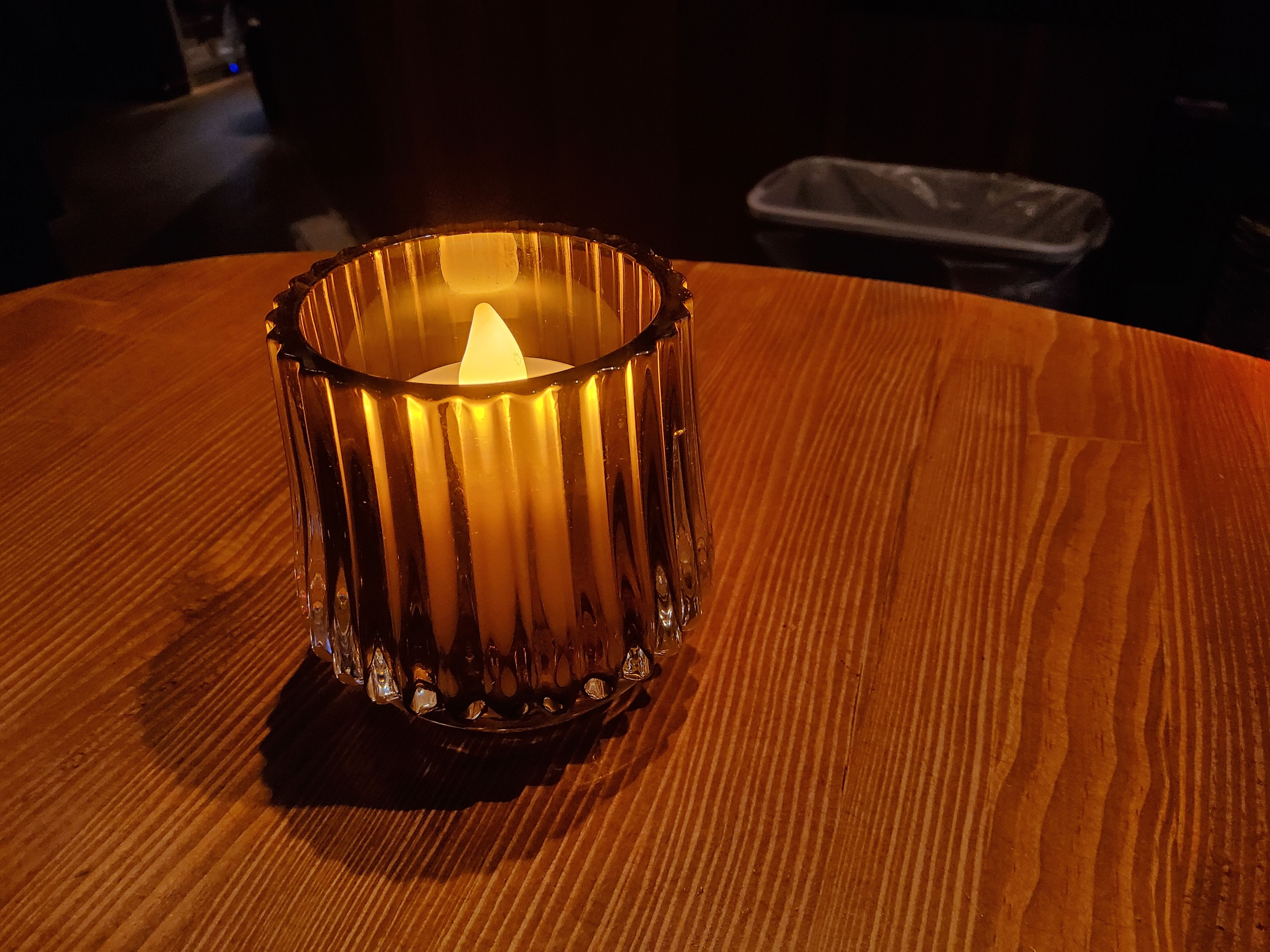 The LUMEA LDT electric candle in a cafe in Bergen, Norway
The LUMEA LDT electric candle in a cafe in Bergen, Norway
- When was it introduced?
- Where is it manufactured?
- Is the plastic candle designed and sold together with the glass holder?
- Is it more eco-friendly than a regular candle?
- Is it used because regular candles would be forbidden by fire safety regulations?
- Why does the bottom label have a warning about not removing the label itself?
- What other functions are available through the unseen remote control?
- Does it produce more or less light than an actual candle?
- How many people would remember "candleness" after leaving the cafe without realizing the candles were electric?
- Where does the word "candle" come from?
- How much does one electric candle cost?
- How long does one charge last?
- How is the slow flickering effect achieved?
- What does the LUMEA LTD company produce, besides this object?
- Where did this specific electric candle travel from, as bits and pieces, as it was assembled, packaged, shipped and sold?
- How long ago was this candle manufactured?
- How many people touched it in its lifetime?
- Is it skeumorphism if the interaction is actually different (i.e. the candle flame doesn't burn, it can only be turned off via a button on the bottom)?
- Why does my hand feel the illusion of warmth when it hovers over it?
- What does the CE acronym printed on the bottom label mean?
- How much of a candle's perceptual affect is encultured, and how much is it ancestral memory of fire?
- Are there religious justifications for the use of electric candles across faiths?
- Would it float?
- How easy would it be to hack it into a data visualization medium?
- Can you feel its silent hum?